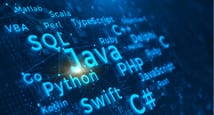- Introduction
- What is JavaScript?
- JavaScript in Action!
- Join our Online Learning Community
- How JavaScript Is Executed
- Dynamic vs Weakly Typed Languages
- JavaScript Executes In A Hosted Environment
- Course Outline - What's In This Course?
- How To Get The Most Out Of This Course
- Using Course Resources
- JavaScript vs Java
- A Brief History Of JavaScript
- Setting Up a Development Environment
- Course FAQs
JavaScript - The Complete Guide 2024 (Beginner + Advanced)
Learn the fundamentals and advanced concepts of modern Javascript, including meta-programming and object-oriented ...Read more
Online
₹ 4999
Quick Facts
| particular | details | |||
|---|---|---|---|---|
|
Medium of instructions
English
|
Mode of learning
Self study
|
Mode of Delivery
Video and Text Based
|
Course overview
Maximilian Schwarzmüller - Professional Web Developer & Instructor designed the JavaScript - The Complete Guide (Beginner + Advanced) certification course, which is provided on Udemy. The JavaScript - The Complete Guide (Beginner + Advanced) online course begins with the fundamentals of the language, as well as an extensive reference of the JavaScript language and environment, ensuring that both newcomers and experienced JavaScript developers gain the ultimate knowledge to help them develop their skills in Javascripts to work with variables, functions, objects, and arrays.
JavaScript - The Complete Guide (Beginner + Advanced) online classes seek to provide students with a hands-on experience with 52 hours of in-depth video lectures, 76 articles, and a whopping 696 downloadable materials that cover every bit of information presented in the lectures. Students who want to enroll in the course must go to the official website and register for the course.
The highlights
- Certificate of completion
- Self-paced course
- English videos with multi-language subtitles
- 52 hours of pre-recorded video content
- 76 articles
- 696 downloadable resources
- 30-day money-back guarantee
- Unlimited access
- Accessible on mobile devices and TV
Program offerings
- Certificate of completion
- Self-paced course
- English videos with multi-language subtitles
- 52 hours of pre-recorded video content
- 76 articles
- 696 downloadable resources
- 30-day money-back guarantee
- Unlimited access
Course and certificate fees
Fees information
certificate availability
Yes
certificate providing authority
Udemy
Who it is for
What you will learn
After completing the JavaScript - The Complete Guide (Beginner + Advanced) online certification, students will obtain a thorough understanding of the fundamentals of Javascripts for use in web development projects. Students will learn about DOM approaches for manipulating web pages utilizing Javascript, as well as the distinctions between Java and Javascript. Meta-programming, object-oriented programming, programming paradigms, speed enhancement, memory leak detection, and testing will all be covered. Students will also learn about event management methods, deployments, and security processes.
The syllabus
Introduction
Basics: Variables, Data Types, Operators & Functions
- Module Introduction
- Setting Up the Project
- More on Version Control & Git
- Adding JavaScript to the Website
- Introducing Variables & Constants
- Declaring & Defining Variables
- Working with Variables & Operators
- Variables & Operators
- Understanding the Starting Code
- Data Types: Numbers & Strings (Text)
- Using Constants
- More on Strings
- Data Types & Constants
- Time to Practice: Variables, Constants, Operators & Core Data Types
- Introducing Functions
- Adding A Custom Function
- Code Styles, Conventions & Syntax
- Returning Values
- The (Un)Importance of Code Order
- An Introduction to Global & Local Scope
- "Shadowed Variables"
- More about the "return" Statement
- Executing Functions "Indirectly"
- "Indirect" vs "Direct" Function Execution - Summary
- Functions & Scope
- Time to Practice: Functions
- Converting Data Types
- Mixing Numbers & Strings
- Splitting Code into Functions
- Connecting all Buttons to Functions
- Working with Code Comments
- More Operators!
- More Core Data Types!
- Using Arrays
- Creating Objects
- Objects - Common Syntax Gotchas
- Accessing Object Data
- Arrays & Objects
- Adding a Re-Usable Function That Uses Objects
- undefined, null & NaN
- The "typeof" Operator
- "undefined", "null" & "NaN"
- Importing Scripts Correctly with "defer" & "async"
- Importing JavaScript - Summary
- Wrap Up
- Useful Resources & Links
Efficient Development & Debugging
- Module Introduction
- Efficient Development & Debugging - An Overview
- Configuring the IDE Look & Feel
- Using Shortcuts
- Working with Auto-Completion & IDE Hints
- Installing IDE Extensions
- Tweaking Editor Settings
- Utilizing Different IDE Views
- Finding Help & Working with MDN
- The ECMAScript Standard
- How to "google" Correctly
- Debugging JavaScript - An Overview
- An Error Message! No Reason To Panic!
- Using console.log() to look "into the Code"
- Next-Level Debugging with the Chrome Devtools & Breakpoints
- Testing Code Changes Directly in the Devtools
- Debugging Code directly Inside VS Code
- Wrap Up
- Useful Resources & Links
Working with Control Structures (if Statements, Loops, Error Handling)
- Module Introduction
- Introducing "if" Statements & Boolean (Comparison) Operators
- Using Booleans in Conditions & More on Text Comparisons
- Using "if" Statements
- Working with "if", "else" and "else-if"
- Beware When Comparing Objects & Arrays for Equality!
- The Logical AND and OR Operators
- Understanding Operator Precedence
- if & Boolean Operators - The Basics
- Beyond true/ false: "Truthy" and "Falsy" Values
- Coercion vs Conversion
- Falsy and Truthy Values
- Setting Up a Bigger Example Project (The "Monster Killer")
- Adding an "Attack" Function
- Using "if" Statements for Checking the Win-Condition
- Adding More "if" Statements & A "Strong Attack" Functionality
- Time for a "Heal Player" Functionality!
- Controlling the Conditional Bonus Life (Without Boolean Operators!)
- Adding a "Reset Game" Functionality
- Validating User Input
- Utilizing Global Constants as Identifiers in Conditional Code
- Adding a Conditional Battle Log
- Introducing the Ternary Operator
- A Bit of Theory: Statements vs Expressions
- Logical Operator "Tricks" & Shorthands
- Logical Operators - A Quick Summary
- Logical Operators & How They Work
- Working with the "switch-case" Statement
- Introducing Loops
- The "for" Loop
- The "for-of" Loop
- The "for-in" Loop
- The "while" & "do-while" Loops
- Loops - Basics
- Time to Practice: Control Structures
- Controlling Loops with "break"
- Controlling Iterations with "continue"
- More Control with Labeled Statements
- break & continue
- Error Handling with "try-catch" - An Introduction
- Throwing Custom Errors
- Working with "try-catch" to Catch & Handle Errors
- Error Handling
- Wrap Up
- Useful Resources & Links
Behind the Scenes & The (Weird) Past (ES3, ES5) & Present (ES6+) of JavaScript
- Module Introduction
- ES5 vs ES6+ ("Next Gen JS") - Evolution of JavaScript
- var vs let & const - Introducing "Block Scope"
- Understanding "Hoisting"
- Strict Mode & Writing Good Code
- "JavaScript Specialties"
- How Code is Parsed & Compiled
- Inside the JavaScript Engine - How the Code Executes
- [DEEP DIVE] JavaScript Language vs Browser APIs
- Primitive vs Reference Values
- Garbage Collection & Memory Management
- Wrap Up
- Useful Resources & Links
More on Functions
- Module Introduction
- Recapping Functions Knowledge - What We Know Thus Far
- Parameters vs Arguments
- Functions vs Methods
- Functions are Objects!
- Function Expressions: Storing Functions in Variables
- Function Expressions vs Function Declarations
- Anonymous Functions
- Working on the Project: Adding User Choices to the Game
- Implementing the Core Game Logic
- Introducing Arrow Functions
- Different Arrow Function Syntaxes
- Creating Functions
- Outputting Messages to the User
- Default Arguments in Functions
- Introducing Rest Parameters ("Rest Operator")
- Creating Functions Inside of Functions
- Understanding Callback Functions
- Time to Practice: Functions
- Working with "bind()"
- Functions - Advanced
- Adding bind() to the Calculator Project
- call() and apply()
- Wrap Up
- Useful Resources & Links
Working with the DOM (Browser HTML Code) in JavaScript
- Module Introduction
- What's the "DOM"?
- Document and Window Object
- Understanding the DOM and how it's created
- Nodes & Elements - Querying the DOM Overview
- Selecting Elements in the DOM
- Summary: Node Query Methods
- Exploring and Changing DOM Properties
- Attributes vs Properties
- Selecting Multiple Elements & Summary
- DOM Basics
- Time to Practice: DOM Querying
- Traversing the DOM - Overview
- Traversing Child Nodes
- Using parentNode & parentElement
- Selecting Sibling Elements
- DOM Traversal vs Query Methods
- Styling DOM Elements
- Creating Elements with JS - Overview
- Adding Elements via HTML in Code
- Adding Elements via createElement()
- Inserting DOM Elements
- Cloning DOM Nodes
- Live Node Lists vs Static Node Lists
- Removing Elements
- Insertion & Removal Method Summary
- Summary: Insert, Replace, Remove
- Setting Up the Practice Project
- Selecting the Modal and "Add" Button
- Opening a Modal by Changing CSS Classes
- Controlling the Backdrop
- Fetching and Validating User Input
- Creating a Movie in JavaScript & Clearing the Input
- Rendering Movie Items on the Screen
- Deleting Movie Elements
- Showing & Hiding the "Are you sure?" Dialog
- Starting with the Confirmation Logic
- Finishing the App
- Wrap Up
- Useful Resources & Links
More on Arrays & Iterables
- Module Introduction
- What are "Iterables" and "Array-like Objects"?
- Creating Arrays
- Which Data Can You Store In Arrays?
- push(), pop(), unshift(), shift() - Adding & Removing Elements
- The splice() Method
- Selecting Ranges & Creating Copies with slice()
- Adding Arrays to Arrays with concat()
- Retrieving Indexes with indexOf() /& lastIndexOf()
- Finding Stuff: find() and findIndex()
- Is it Included?
- Alternative to for Loops: The forEach() Method
- Transforming Data with map()
- sort()ing and reverse()ing
- Filtering Arrays with filter()
- Where Arrow Functions Shine!
- The Important reduce() Method
- Chaining Methods in JavaScript
- Arrays & Strings - split() and join()
- The Spread Operator (...)
- Understanding Array Destructuring
- Maps & Sets - Overview
- Working with Sets
- Working with Maps
- Maps vs Objects
- Understanding WeakSet
- Understanding WeakMap
- Time to Practice: Arrays & Iterables
- Wrap Up
- Useful Resources & Links
More on Objects
- Module Introduction
- What's an Object?
- Objects & Primitive Values
- Objects - Recap
- Adding, Modifying & Deleting Properties
- Special Key Names & Square Bracket Property Access
- Property Types & Property Order
- Dynamic Property Access & Setting Properties Dynamically
- Object Properties
- Demo App & Shorthand Property Syntax
- Rendering Elements based on Objects
- for-in Loops & Outputting Dynamic Properties
- Adding the Filter Functionality
- Understanding "Chaining" (Property & Method Chaining)
- The Object Spread Operator (...)
- Understanding Object.assign()
- Object Destructuring
- Checking for Property Existance
- Introducing "this"
- The Method Shorthand Syntax
- The "this" Keyword And Its Strange Behavior
- call() and apply()
- What the Browser (Sometimes) Does to "this"
- "this" and Arrow Functions
- "this" - Summary
- "this"
- Getters & Setters
- Wrap Up
- Useful Resources & Links
Classes & Object-oriented Programming (OOP)
- Module Introduction
- What is "Object-oriented Programming" (OOP)?
- Getting Started with OOP Code
- Defining & Using a First Class
- Working with Constructor Methods
- Fields vs Properties
- Using & "Connecting" Multiple Classes
- Binding Class Methods & Working with "this"
- Adding a Cart and Shop Class
- Communicating Can Be Challenging!
- Static Methods & Properties
- First Summary & Classes vs Object Literals
- Getters & Setters
- Introducing Inheritance
- Implementing Inheritance
- Using Inheritance Everywhere
- Overriding Methods and the super() Constructor
- super() Constructor Execution, Order & "this"
- Different Ways of Adding Methods
- Private Properties
- "Pseudo-Private" Properties
- Time to Practice: Classes & OOP
- The "instanceof" Operator
- Built-in Classes
- Understanding Object Descriptors
- Classes
- Wrap Up
- Useful Resources & Links
Deep Dive: Constructor Functions & Prototypes
- Module Introduction
- Introducing Constructor Functions
- Constructor Functions vs Classes & Understanding "new"
- Introducing Prototypes
- Prototypes - Summary
- Working with Prototypes
- The Prototype Chain and the Global "Object"
- Constructor Functions & Prototypes
- Classes & Prototypes
- Methods in Classes & In Constructors
- Built-in Prototypes in JavaScript
- Setting & Getting Prototypes
- Wrap Up
- Useful Resources & Links
Practice: OOP & Classes
- Module Introduction
- First Project Steps & Planning
- Creating Project Lists & Parsing Element Data
- Starting with the "Switch Project" Logic
- Passing Method References Around
- Moving DOM Elements
- Adding a Tooltip
- Adding Inheritance
- Wrap Up
- Useful Resources & Links
Back to the DOM & More Browser APIs
- Module Introduction
- Using "dataset" (data-* Attributes)
- Getting Element Box Dimensions
- Working with Element Sizes & Positions
- The DOM & Prototypes
- Positioning the Tooltip
- Handling Scrolling
- Working with <template> Tags
- Loading Scripts Dynamically
- Setting Timers & Intervals
- The "location" and "history" Objects
- The "navigator" Object
- Working with Dates
- The "Error" Object & Constructor Function
- Wrap Up
- Useful Resources & Links
Working with Events
- Module Introduction
- Introduction to Events in JavaScript
- Different Ways of Listening to Events
- Removing Event Listeners
- The "event" Object
- Supported Event Types
- Example: Basic Infinite Scrolling
- Working with "preventDefault()"
- Understanding "Capturing" & "Bubbling" Phases
- Event Propagation & "stopPropagation()"
- Using Event Delegation
- Triggering DOM Elements Programmatically
- Event Handler Functions & "this"
- Events
- Drag & Drop - Theory
- Configuring Draggable Elements
- Marking the "Drop Area"
- Dropping & Moving Data + Elements
- Firefox Adjustments
- Wrap Up
- Useful Resources & Links
Advanced Function Concepts
- Module Introduction
- Pure Functions & Side-Effects
- Impure vs Pure Functions
- Factory Functions
- Closures
- Closures in Practice
- Closures & Memory Management
- Optional: IIFEs
- Introducing "Recursion"
- Advanced Recursion
- Advanced Functions
- Wrap Up
- Useful Resources & Links
More on Numbers & Strings
- Module Introduction
- How Numbers Work & Behave in JavaScript
- Floating Point (Im)Precision
- The BigInt Type
- The Global "Number" and "Math" Objects
- Example: Generate Random Number Between Min/ Max
- Exploring String Methods
- Tagged Templates
- Introducing Regular Expressions ("RegEx")
- More on Regular Expressions
- Wrap Up
- Useful Resources & Links
Async JavaScript: Promises & Callbacks
- Module Introduction
- Understanding Synchronous Code Execution ("Sync Code")
- Understanding Asynchronous Code Execution ("Async Code")
- Blocking Code & The "Event Loop"
- Sync + Async Code - The Execution Order
- Multiple Callbacks & setTimeout(0)
- Asynchronous Code
- Getting Started with Promises
- Chaining Multiple Promises
- Promise Error Handling
- Promise States & "finally"
- Async/ await
- Async/ await & Error Handling
- Async/ await vs "Raw Promises"
- Promise.all(), Promise.race() etc.
- Promises & async/ await
- Wrap Up
- Useful Resources & Links
Working with Http Requests
- Module Introduction
- What & Why
- How The Web Works
- More Background about Http
- Getting Started with Http
- Sending a GET Request
- JSON Data & Parsing Data
- JSON Data Deep Dive
- Promisifying Http Requests (with XMLHttpRequest)
- Sending Data with a POST Request
- Triggering Requests via the UI
- The "Fetch" Button Always Appends
- Sending a DELETE Request
- Handling Errors
- Using the fetch() API
- POSTing Data with the fetch() API
- Adding Request Headers
- fetch() & Error Handling
- XMLHttpRequest vs fetch()
- Working with FormData
- Wrap Up
- Useful Resources & Links
Working with JavaScript Libraries
- Module Introduction
- What & Why
- Adding Libraries (Example: lodash)
- Example: jQuery
- Discovering Libraries
- Axios Library & Http Requests
- Third-Party Library Considerations
- Wrap Up
- Useful Resources & Links
Modular JavaScript (Working with Modules)
- Module Introduction
- Splitting Code in a Sub-optimal Way
- A First Step Towards JavaScript Modules
- We Need a Development Server!
- First import / export Work
- Switching All Files To Use Modules
- More Named Export Syntax Variations
- Working With Default Exports
- Dynamic Imports & Code Splitting
- When Does Module Code Execute?
- Module Scope & globalThis
- Modules
- Wrap Up
- Useful Resources & Links
JavaScript Tooling & Workflows
- Module Introduction
- Project Limitations & Why We Need Tools
- Workflow Overview
- A Note About The NodeJS Version
- Setting Up a npm Project
- Working with npm Packages
- Linting with ESLint
- Configuring ESLint
- Important: Webpack Version
- Bundling with Webpack
- Bonus: Multiple Entry Points
- Development Mode & Fixing "Lazy Loading"
- Using webpack-dev-server
- Generating Sourcemaps
- Building For Production
- Final Optimizations
- Using Third Party Packages with npm & Webpack
- Wrap Up
- Useful Resources & Links
Utilizing Browser Storage
- Module Introduction
- Browser Storage Options
- localStorage & sessionStorage
- Getting Started with Cookies
- Working with Cookies
- Getting Started with IndexedDB
- Working with IndexedDB
- Wrap Up
- Useful Resources & Links
JavaScript & Browser Support
- Module Introduction
- What Is "Browser Support" About?
- Determining Browser Support For A JavaScript Feature
- Determining Required Support
- Solution: Feature Detection + Fallback Code
- Solution: Using Polyfills
- Solution: Transpiling Code
- Improvement: Automatically Detect + Add Polyfills
- What about Support Outside of Browsers?
- Browser Support Outside of JavaScript Files
- Wrap Up
- Useful Resources & Links
Time to Practice: Share My Place App
- Module Introduction
- Setting Up the Project
- Getting DOM Access
- Getting the User Location
- Adding Feedback (Showing a Modal)
- Hiding the Modal
- Rendering a Map with Google Maps
- Continuing without a Credit Card
- Finding an Address & Getting the Coordinates
- Converting User Input to Coordinates
- Creating a "Share Place" Link
- Copying the Link to the Clipboard
- Rendering the "Shared Place" Screen
- Useful Resources & Links
Working with JavaScript Frameworks
- Module Introduction
- What and Why?
- The Idea Behind React.js
- Analysing a React Project
- Wrap Up
- Useful Resources & Links
Meta-Programming: Symbols, Iterators, Generators, Reflect API & Proxy API
- Module Introduction
- Understanding Symbols
- Well-known Symbols
- Understanding Iterators
- Generators & Iterable Objects
- Generators Summary & Built-in Iterables Examples
- The Reflect API
- The Proxy API and a First "Trap"
- Working with Proxy Traps
- Wrap Up
- Useful Resources & Links
Node.js: An Introduction
- Module Introduction
- JavaScript is a Hosted Language
- Installation & Basics
- Understanding Modules & File Access
- Working with Incoming Http Requests
- Sending Responses (HTML Data)
- Parsing Incoming Data
- Introducing & Installing Express.js
- Express.js: The Basics
- Extracting Data
- Rendering Server-side HTML with Templates & EJS
- Enhancing Our Project
- Adding Basic REST Routes
- Understanding CORS (Cross Origin Resource Sharing)
- Sending the Location ID to the Frontend
- Adding the GET Location Route
- Introducing MongoDB (Database)
- NodeJS Error Handling
- Wrap Up
- Useful Resources & Links
Security
- Module Introduction
- Security Hole Overview & Exposing Data in your Code
- Cross-Site Scripting Attacks (XSS)
- Third-Party Libraries & XSS
- XSS & Exposing Confidential Details
- CSRF Attacks (Cross Site Request Forgery)
- CORS (Cross Origin Resource Sharing)
- Wrap Up
- Useful Resources & Links
Deploying JavaScript Code
- Module Introduction
- Deployment Steps
- Different Types of Websites
- Example: Static Host Deployment (no Server-side Code)
- Injecting Script Imports Into HTML Automatically
- Example: Dynamic Page Deployment (with Server-side Code)
- Useful Resources & Links
Performance & Optimizations
- Module Introduction
- What is "Performance Optimization" About?
- Optimization Potentials
- Measuring Performance
- Diving Into The Browser Devtools (for Performance Measuring)
- Further Resources
- Preparing The Testing Setup
- Optimizing Startup Time & Code Usage / Coverage
- Updating The DOM Correctly
- Updating Lists Correctly
- Optimizing The Small Things
- Micro-Optimizations (Think Twice!)
- Finding & Fixing Memory Leaks
- Server-side Performance Optimizations
- Wrap Up
- Useful Resources & Links
Introduction to Testing
- Module Introduction
- What Is Testing? Why Does It Matter?
- Testing Setup
- Writing & Running Unit Tests
- Writing & Running Integration Tests
- Writing & Running e2e Tests
- Dealing with Async Code
- Working with Mocks
- Useful Resources & Links
Bonus: Programming Paradigms (Procedural vs Object Oriented vs Functional)
- Module Introduction
- What are Programming Paradigms?
- Procedural Programming in Practice
- Object Oriented Programming in Practice
- Functional Programming in Practice
- Wrap Up
- Useful Resources & Links
Bonus: Data Structures & Algorithms Introduction
- Module Introduction
- What are "Data Structures" & "Algorithms"?
- A First Example
- Solving the Same Problem Differently
- Performance & The "Big O" Notation
- More Time Complexities & Comparing Algorithms
- More on Big O
- More Examples
- Diving into Data Structures & Time Complexities
- Where to Learn More & Wrap Up
- Useful Resources & Links
Bonus: TypeScript Introduction
- Module Introduction
- What is TypeScript and Why would you use it?
- Working with Types
- Core Types & Diving Deeper
- Object Types, Array Types & Function Types
- Advanced Types (Literal Types, Union Types, Enums)
- Classes & Interfaces
- Generic Types
- Configuring the TypeScript Compiler
- Useful Resources & Links
Bonus: Web Components
- Module Introduction
- Web Components in Action
- What are Web Components?
- Why Web Components?
- Getting Started!
- Web Component Browser Support
- Our Development Setup
- A First Custom Element
- Interacting with the Surrounding DOM
- Understanding the Custom Element Lifecycle
- Using "connectedCallback" for DOM Access
- Listening to Events Inside the Component
- Using Attributes on Custom Elements
- Styling our Elements
- Working with the "Shadow DOM"
- Adding an HTML Template
- Using Slots
- Defining the Template in JavaScript
- Using Style Tags in the Shadow DOM
- Extending Built-in Elements
- Time to Practice - The Basics
- The Next Steps
- Understanding Shadow DOM Projection
- Styling "slot" Content Outside of the Shadow DOM
- Styling "slot" Content Inside of the Shadow DOM
- Styling the Host Component
- Conditional Host Styling
- Styling with the Host Content in Mind
- Smart Dynamic Styling with CSS Variables
- Cleaning Up the Overall Styling
- Observing Attribute Changes
- Adjusting the Component Behavior Upon Attribute Changes
- Using "disconnectedCallback"
- Adding a render() Method
- Final Adjustment
- The Next Steps
- Creating the Basic Modal Component
- Adding the Modal Container
- Styling the Modal Elements
- Adding Some General App Logic
- Opening the Modal via CSS
- Public Methods & Properties
- Understanding Named Slots
- Listening to Slot Content Changes
- Closing the Modal
- Dispatching Custom Events
- Configuring Custom Events
- Finishing it up!
- Useful Resources & Links
Roundup & Next Steps
- Congratulations!
- Bonus! (Next Steps Overview / Other Topics)

 (1).jpg)
 Brochure
Brochure Enquire
Enquire











